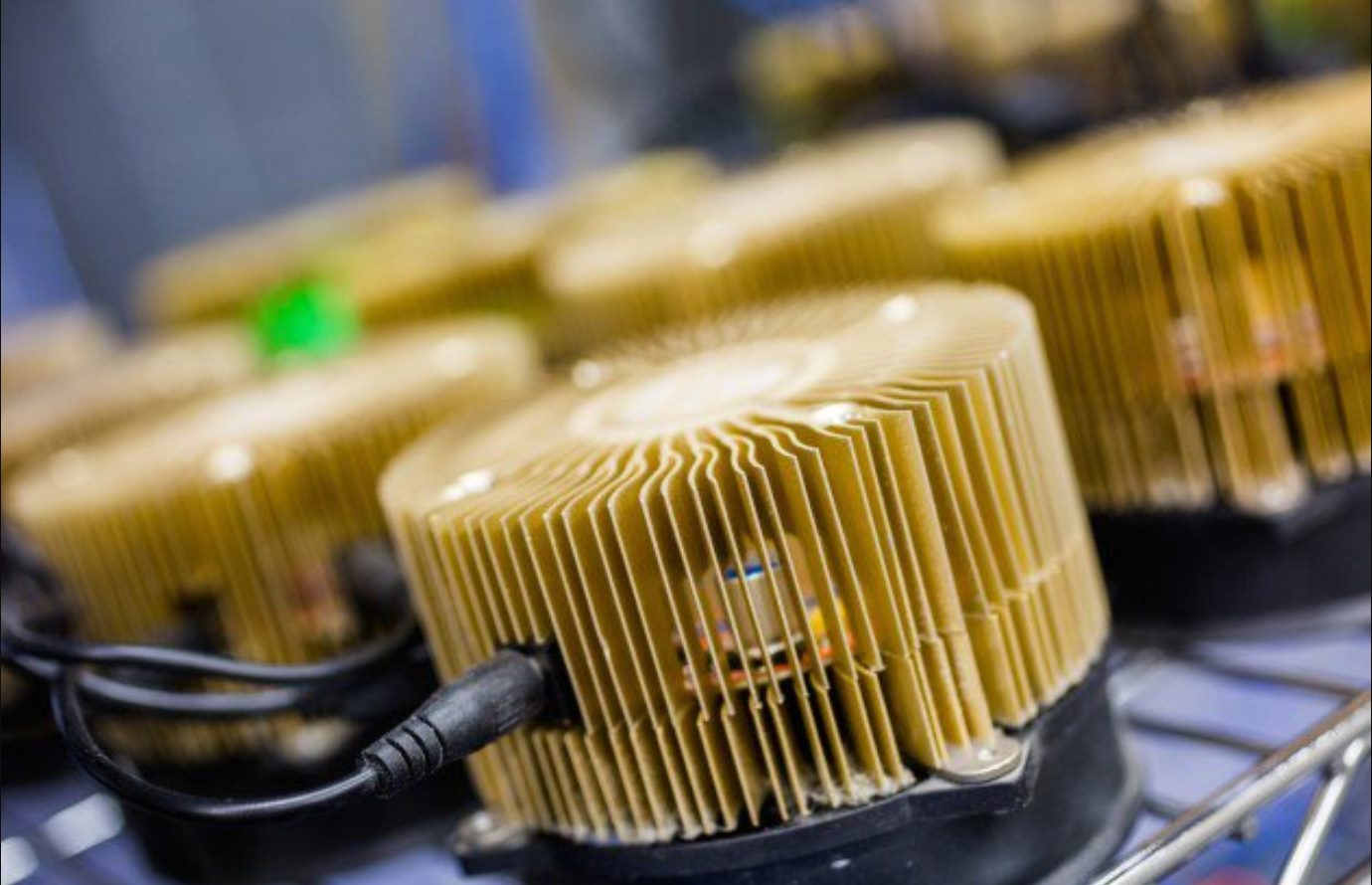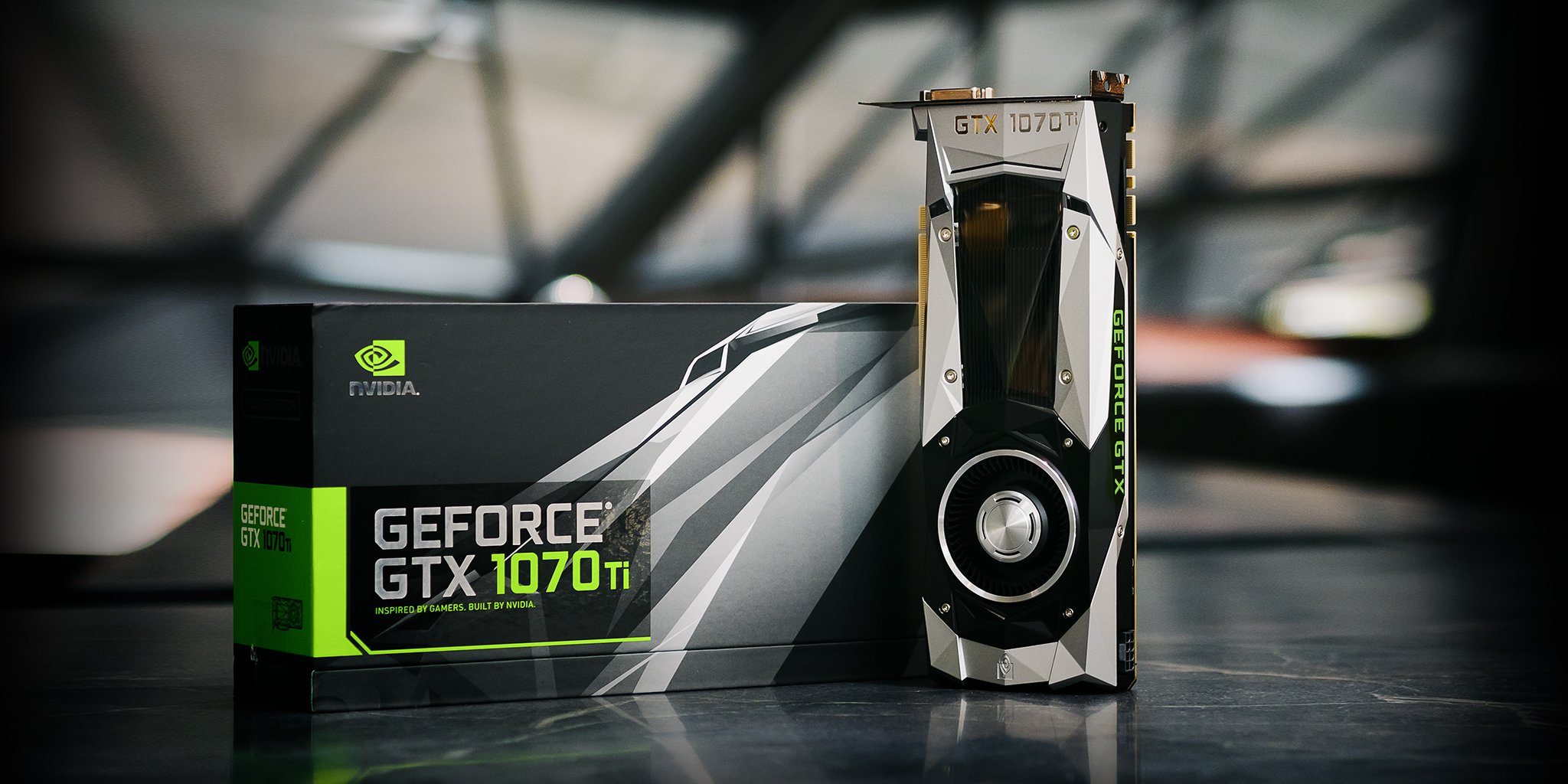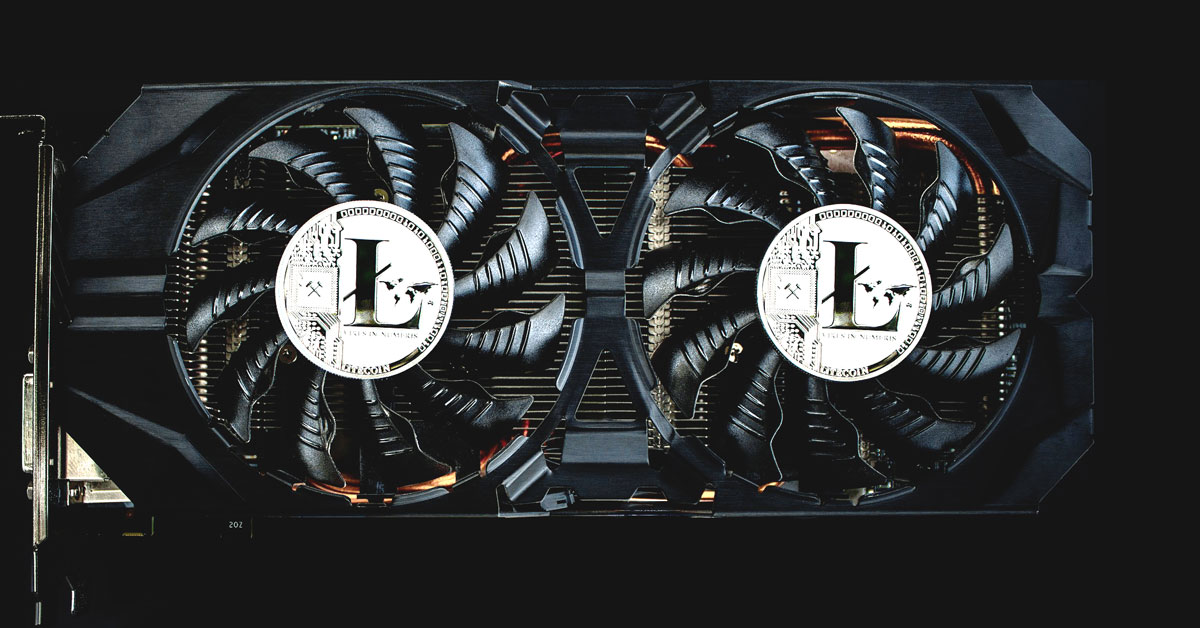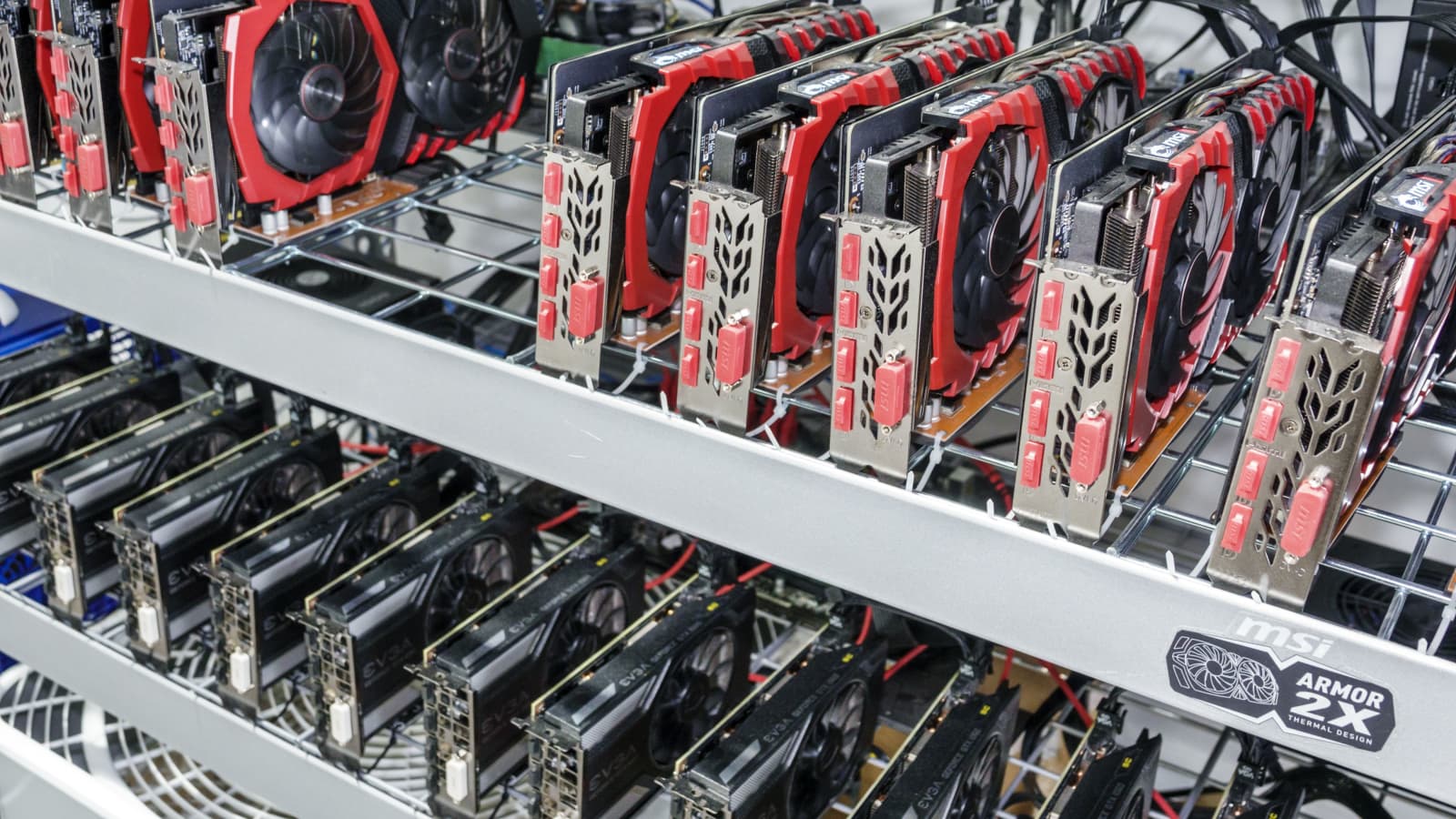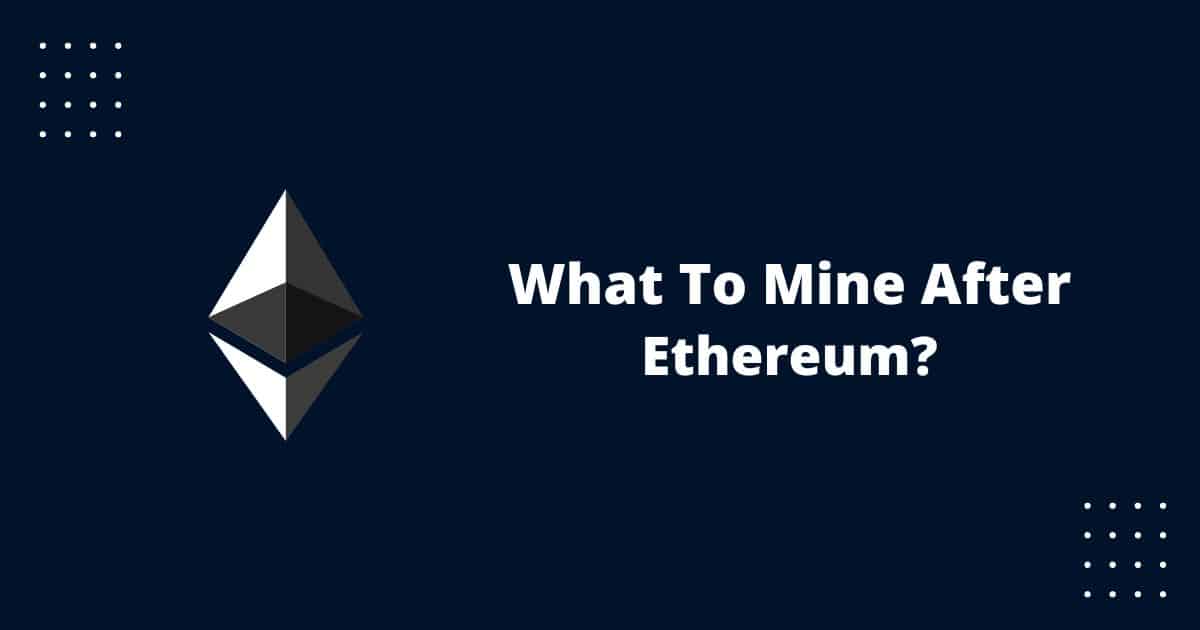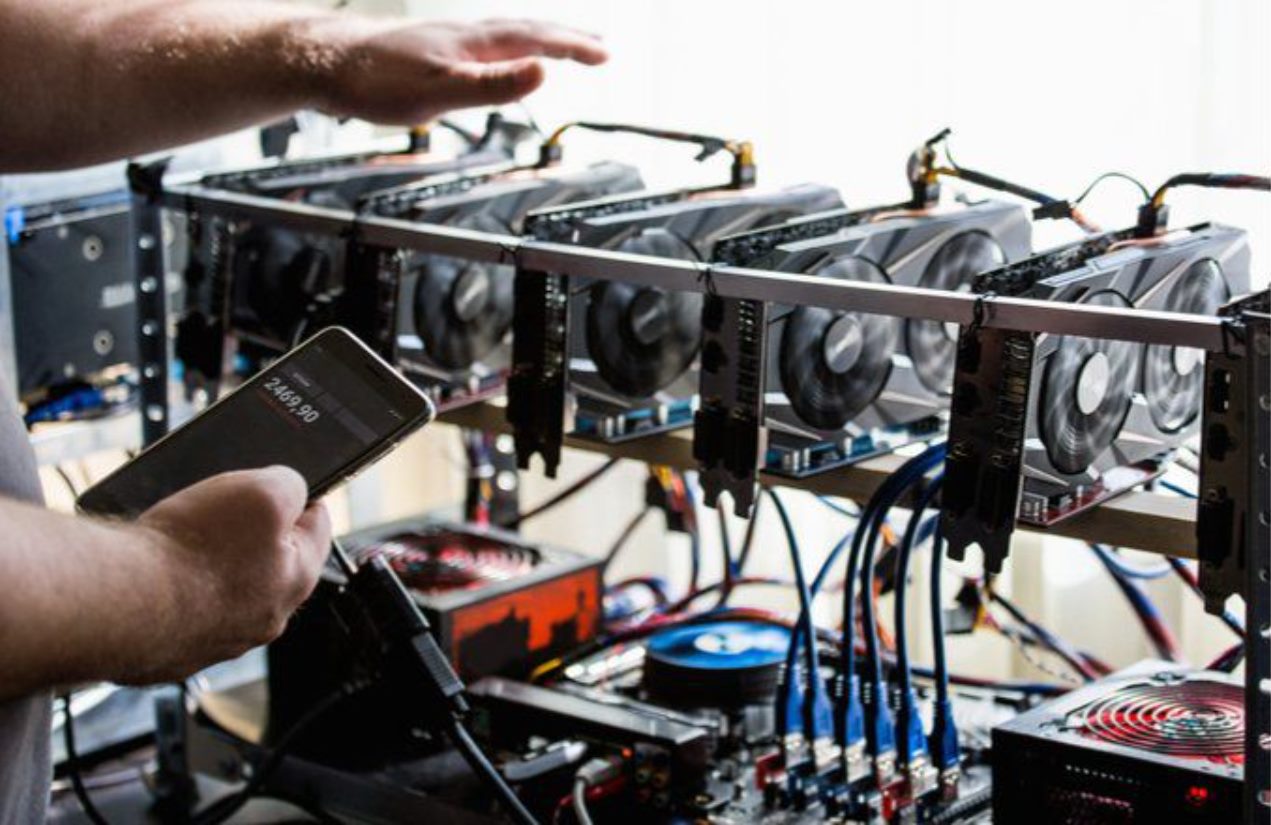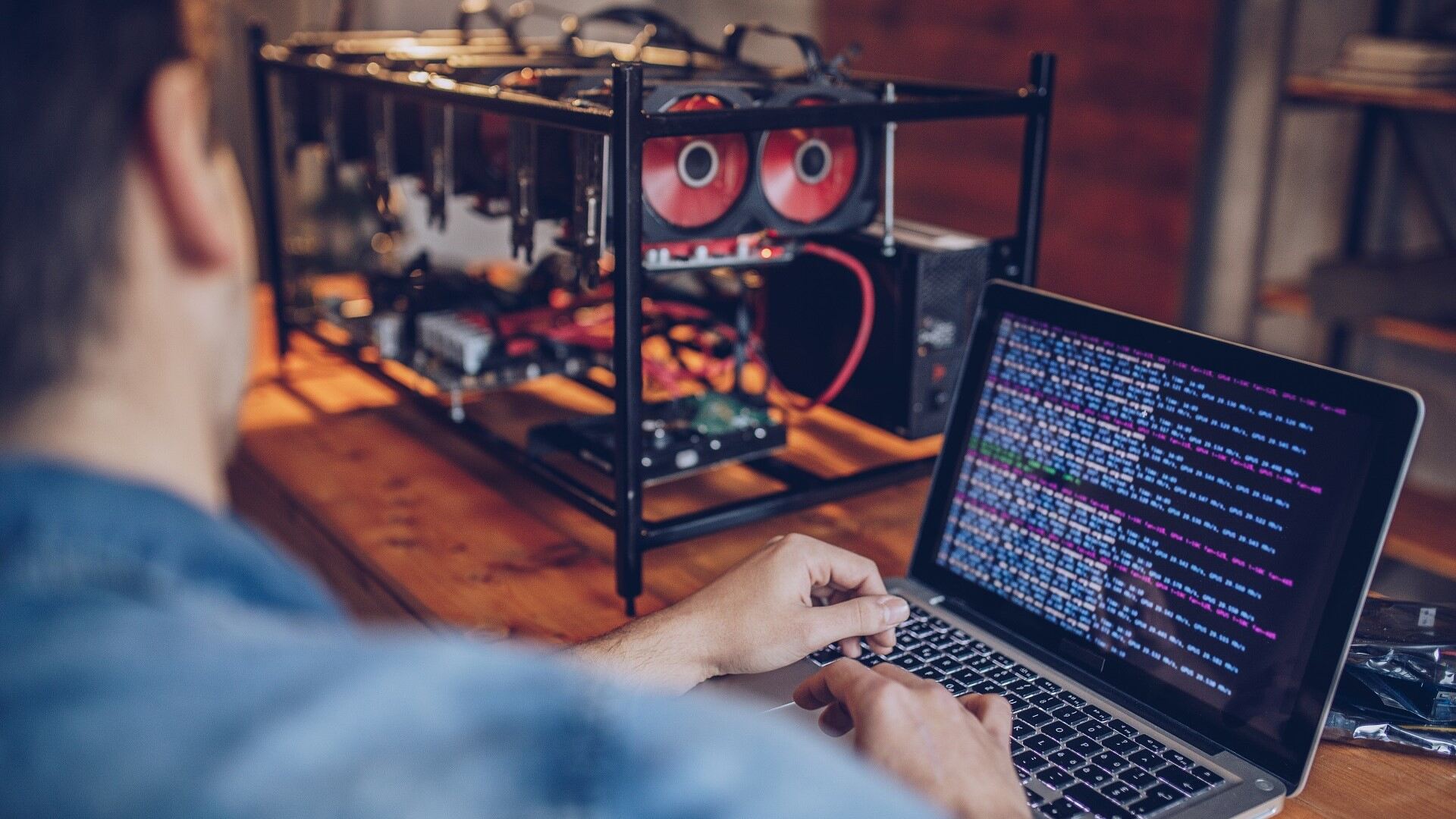Introduction
Are you interested in mining Litecoin and maximizing your profitability? If so, then you’ve come to the right place. In this article, we will explore the world of dual mining and how you can use a Gridseed ASIC 5 chip miner to mine Litecoin in dual pools.
Litecoin mining is the process of validating and recording transactions on the Litecoin blockchain. Miners use powerful hardware to solve complex mathematical problems, and in return, they are rewarded with newly minted Litecoins. Traditionally, miners focused on mining a single cryptocurrency, but with the rise of dual mining, it is now possible to mine two different cryptocurrencies simultaneously.
The Gridseed ASIC 5 chip miner is a popular and efficient device for mining cryptocurrencies. It combines both ASIC (Application-Specific Integrated Circuit) and FPGA (Field-Programmable Gate Array) technologies, making it capable of mining multiple cryptocurrencies, including Litecoin.
To get started with dual mining using the Gridseed ASIC 5 chip miner, you need to set it up correctly and choose the right Litecoin pools. Dual mining allows you to mine two cryptocurrencies at the same time, maximizing your mining power and profitability.
In this article, we will guide you through the setup process, help you choose the right Litecoin pools, and show you how to configure your Gridseed ASIC 5 chip miner for dual mining. We will also provide troubleshooting tips for common issues that you may encounter during the dual mining process.
By the end of this article, you will have a clear understanding of how to mine Litecoin in dual pools using a Gridseed ASIC 5 chip miner. So, let’s dive in and explore the exciting world of dual mining.
What is Litecoin mining?
Litecoin mining is the process of using computational power to validate and secure transactions on the Litecoin network. Similar to Bitcoin mining, it involves solving complex mathematical problems to confirm transactions and add them to the Litecoin blockchain.
Unlike traditional fiat currencies, which are controlled by central banks, Litecoin is a decentralized cryptocurrency that relies on a network of computers, known as miners, to maintain its operation. Miners play a crucial role in the Litecoin ecosystem by ensuring the integrity and security of transactions.
When a user initiates a transaction on the Litecoin network, it is broadcasted to all the nodes in the network. Miners then collect these transactions and bundle them into blocks. To add a block to the blockchain, miners must solve a mathematical puzzle called a proof-of-work algorithm.
The proof-of-work algorithm used in Litecoin mining is called Scrypt. This algorithm requires a significant amount of computational power and memory, making it resistant to ASIC (Application-Specific Integrated Circuit) miners that are commonly used for Bitcoin mining. As a result, Litecoin mining is more accessible to individual miners using consumer-grade hardware.
Miners compete with each other to solve the algorithm and be the first to find a valid solution. The miner who successfully solves the algorithm is rewarded with a certain number of Litecoins and any transaction fees included in the block. This is the incentive that drives miners to invest in powerful hardware and dedicate their computational resources to the mining process.
Litecoin mining has evolved over the years. Initially, miners used CPUs (Central Processing Units) to mine Litecoins. However, as the network grew, the calculations became more complex, and CPUs became inefficient. This led to the development of GPU (Graphics Processing Unit) mining, which offered more computational power and improved mining efficiency.
Today, specialized mining hardware called ASICs (Application-Specific Integrated Circuits) are commonly used for Litecoin mining. These devices are designed specifically for mining cryptocurrencies and offer significantly higher hash rates compared to CPUs and GPUs.
In summary, Litecoin mining is the process of using computational power to validate and add transactions to the Litecoin blockchain. Miners are rewarded with Litecoins for their efforts, and the mining process plays a crucial role in maintaining the security and stability of the Litecoin network.
What is a Gridseed ASIC 5 chip miner?
The Gridseed ASIC 5 chip miner is a specialized hardware device designed specifically for mining cryptocurrencies. It is a compact and efficient miner that combines both ASIC (Application-Specific Integrated Circuit) and FPGA (Field-Programmable Gate Array) technologies, making it capable of mining multiple cryptocurrencies, including Litecoin.
The Gridseed ASIC 5 chip miner features a compact design with five mining chips, allowing for increased hashing power while minimizing power consumption. This makes it an attractive option for miners looking to maximize their mining efficiency and profitability.
The ASIC chips used in the Gridseed miner are specifically optimized for Litecoin mining. They are designed to perform the SHA-256 hashing algorithm, which is the algorithm used in Litecoin mining. This means that the Gridseed ASIC 5 chip miner is highly efficient at solving the computational puzzles required to mine Litecoins.
In addition to its ASIC capabilities, the Gridseed miner also incorporates FPGA technology. FPGA chips provide additional flexibility, allowing miners to reprogram and optimize their mining operations. This makes the Gridseed ASIC 5 chip miner a versatile device that can adapt to different mining algorithms and cryptocurrencies.
The Gridseed ASIC 5 chip miner is known for its low power consumption, making it an energy-efficient choice for miners. It uses a USB connection for power and data transfer, making it easy to connect and operate. Its compact size and relatively low noise level make it suitable for both home and professional mining setups.
Setting up the Gridseed ASIC 5 chip miner is relatively straightforward. It requires connecting the miner to a computer or mining rig, installing the necessary software, and configuring the mining parameters. Once set up, the miner will start hashing and generating Litecoins based on the mining pool and settings chosen by the miner.
In summary, the Gridseed ASIC 5 chip miner is a specialized hardware device designed for mining cryptocurrencies, including Litecoin. It combines ASIC and FPGA technologies to provide high mining efficiency and flexibility. With its compact design, low power consumption, and ease of use, the Gridseed ASIC 5 chip miner is a popular choice among miners looking to maximize their profitability in the world of cryptocurrency mining.
Setting up the Gridseed ASIC 5 chip miner
Setting up the Gridseed ASIC 5 chip miner is a relatively simple process. Here’s a step-by-step guide to help you get started:
- Connect the miner: Start by connecting the Gridseed ASIC 5 chip miner to your computer or mining rig using a USB cable. Ensure that the miner has a stable power source and is properly connected to avoid any interruptions during the setup process.
- Install mining software: Next, you’ll need to install mining software that is compatible with the Gridseed ASIC 5 chip miner. Popular options include CGMiner and BFGMiner, which are both open-source mining software programs. You can find the latest version of the software on their respective websites.
- Configure the miner: Once the mining software is installed, you’ll need to configure it to work with the Gridseed ASIC 5 chip miner. This typically involves specifying the mining pool you want to connect to, setting the mining algorithm, and entering your pool credentials, such as the username and password. Refer to the mining software’s documentation for detailed instructions on configuring the miner.
- Test the connectivity: After the miner is configured, it’s a good practice to test its connectivity to the mining pool. This can be done by running a test mining command and checking if the miner successfully connects and starts hashing. If there are any connectivity issues, double-check your configuration settings and ensure that your internet connection is stable.
- Monitor and optimize: Once the miner is connected and hashing, it’s important to monitor its performance and make any necessary adjustments. Keep an eye on the temperature of the miner to ensure it doesn’t overheat and adjust the fan settings if needed. Additionally, consider optimizing your mining settings, such as adjusting the intensity or thread concurrency, to maximize the miner’s efficiency and profitability.
By following these steps, you can successfully set up your Gridseed ASIC 5 chip miner to start mining cryptocurrencies like Litecoin. Remember to regularly update your mining software and stay informed about any firmware updates for the miner to ensure optimal performance and security.
Dual mining in Litecoin pools
Dual mining in Litecoin pools is an advanced mining technique that allows miners to simultaneously mine two different cryptocurrencies while using the same mining hardware. By dual mining, miners can maximize their mining power and potentially increase their profitability by earning rewards from both cryptocurrencies.
The concept of dual mining involves allocating a portion of the mining hardware’s hash power to mine Litecoin and the remaining portion to mine another compatible cryptocurrency simultaneously. In the case of Litecoin mining, popular choices for dual mining include Dogecoin, Dash, and Digitalcoin, among others.
The primary benefit of dual mining in Litecoin pools is the increased efficiency and profitability it offers. By harnessing the power of the same mining hardware to mine multiple cryptocurrencies, miners can effectively reduce the energy consumption and hardware costs associated with dedicated mining rigs for each cryptocurrency.
When dual mining, it’s important to select cryptocurrencies that are compatible with the mining algorithms used by the mining hardware. In the case of the Gridseed ASIC 5 chip miner, cryptocurrencies utilizing the Scrypt or SHA-256 algorithms, such as Litecoin and Bitcoin, are suitable choices for dual mining.
To start dual mining in Litecoin pools, miners need to join a mining pool that supports dual mining and configure their mining software and hardware accordingly. The mining software used should have the capability to handle dual mining and allow for adjusting the mining parameters for each cryptocurrency being mined simultaneously.
When configuring the mining software for dual mining, miners should specify the mining pool information and credentials for both cryptocurrencies. It’s important to ensure that the mining software is configured to allocate the desired hash power to each cryptocurrency, optimizing the mining output and maintaining stability.
Dual mining in Litecoin pools requires careful consideration and monitoring of both cryptocurrencies being mined. Miners should keep an eye on the mining rewards, difficulty levels, and profitability of each cryptocurrency to determine the effectiveness of dual mining. Adjustments to the hash power allocation and mining parameters may be necessary as market conditions and mining difficulties change.
Dual mining can provide an opportunity for miners to diversify their mining operations and potentially earn additional rewards. However, it’s important to note that dual mining may result in increased power consumption, higher hardware temperatures, and adjustments to mining strategies. Miners should carefully assess the benefits and risks associated with dual mining and monitor their hardware and software for optimal performance.
In summary, dual mining in Litecoin pools allows miners to mine Litecoin and another compatible cryptocurrency simultaneously, maximizing their mining power and potential profitability. Proper configuration of mining software and hardware is crucial for successful dual mining. Miners should actively monitor market conditions, difficulty levels, and mining rewards to optimize their dual mining operations.
Choosing the right Litecoin pools
When it comes to mining Litecoin, choosing the right mining pool is crucial. A mining pool is a collective of miners who share their computing power to increase their chances of successfully mining blocks and earning rewards. Here are some factors to consider when selecting the right Litecoin pool:
1. Pool Size: The size of the mining pool can significantly impact your mining experience. Larger pools usually offer more consistent payouts due to the higher combined hash rate. However, smaller pools can provide a more community-oriented atmosphere and potentially less competition.
2. Pool Fee: Most mining pools charge a fee as a percentage of your earnings. The fee typically ranges from 1% to 3%. While a lower fee can translate to higher earnings for miners, it’s essential to balance this with the overall reliability and reputation of the pool.
3. Payout Method: Different mining pools employ different payout methods, such as Pay-Per-Share (PPS), Proportional, or Score-Based systems. Each method has its advantages and disadvantages, so choose one that aligns with your mining goals and preferences.
4. Pool Stability and Uptime: Look for pools that have a proven track record of stability and high uptime. A pool with frequent downtime or technical issues can result in missed mining opportunities and potential earnings loss.
5. Geographic Locations: Consider the server locations of the mining pool, as it can impact your mining latency and overall mining performance. Choose a pool with servers located geographically closer to your mining operation to reduce latency and improve efficiency.
6. Pool Reputation: Research and review the reputation and user feedback of different mining pools. Look for pools that have been operating for an extended period and have a positive reputation for fair payouts and reliable services.
7. Pool Features: Some mining pools offer additional features like real-time monitoring, detailed statistics, and mobile apps for convenient mining management. Consider these extra features when selecting a pool, as they can enhance your mining experience and provide valuable insights into your mining operations.
8. Community and Support: Consider the community and support available within the mining pool. Engaging with a helpful and active community can provide valuable advice, troubleshooting assistance, and insights into the latest developments in Litecoin mining.
It’s important to note that mining pool preferences may vary depending on individual mining goals, hardware capabilities, and personal preferences. It can be beneficial to experiment with different pools to find the one that best suits your needs.
Overall, choosing the right Litecoin pool requires careful consideration of factors such as size, fees, payout methods, stability, reputation, features, and community. By selecting a reliable and suitable pool, miners can optimize their mining experience, maximize their earnings, and enjoy a seamless mining operation.
Configuring the Gridseed ASIC 5 chip miner for dual mining
Configuring the Gridseed ASIC 5 chip miner for dual mining involves setting up the miner to simultaneously mine two different cryptocurrencies. Here’s a step-by-step guide on how to configure the Gridseed ASIC 5 chip miner for dual mining:
- Choose compatible cryptocurrencies: Before configuring the miner, select two cryptocurrencies that are compatible with the Scrypt or SHA-256 algorithms used by the Gridseed ASIC 5 chip miner. Ensure that both cryptocurrencies have active mining pools and suitable mining software for dual mining.
- Install mining software: Download and install the mining software that supports dual mining with the Gridseed ASIC 5 chip miner. Popular mining software options include CGMiner or BFGMiner, both of which have the functionality to configure the miner for dual mining.
- Connect the miner: Connect the Gridseed ASIC 5 chip miner to your computer or mining rig using a USB cable. Ensure that the miner has a stable power source and that it is properly connected.
- Configure the mining software: Open the mining software and configure it to support dual mining. Specify the mining pool information for both cryptocurrencies, including the pool address, port, and your login credentials. Adjust the mining parameters, such as the intensity and thread concurrency, for each cryptocurrency separately.
- Test the configuration: Run a test mining command to ensure that the miner successfully connects to both mining pools and starts mining both cryptocurrencies simultaneously. Monitor the output to verify that the miner is hashing and generating valid shares for both cryptocurrencies.
- Monitor and optimize: Once the dual mining configuration is tested and running, monitor the performance of the miner. Keep an eye on the hash rates, power usage, and temperature of the miner. Adjust the mining parameters if necessary to optimize the performance and balance the hash rate allocation between the two cryptocurrencies.
It’s important to note that dual mining can result in increased power consumption and higher temperatures compared to single mining. Proper monitoring and temperature control are crucial to ensure the longevity of the miner and maintain stability during the dual mining process.
Additionally, keep an eye on the market conditions and profitability of both cryptocurrencies being dual mined. It may be necessary to periodically reassess the mining setup and adjust the mining ratios or configurations for each cryptocurrency to maximize profitability and adapt to changing market dynamics.
By following these steps, you can successfully configure your Gridseed ASIC 5 chip miner for dual mining. Dual mining allows miners to harness the power of the miner to mine two different cryptocurrencies simultaneously, increasing the potential mining efficiency and profitability.
Troubleshooting common issues while dual mining
Dual mining with the Gridseed ASIC 5 chip miner can sometimes encounter issues that may disrupt the mining process. Here are some common issues that miners might face while dual mining and troubleshooting tips to help resolve them:
1. Connectivity problems: If you are experiencing difficulty connecting to one of the mining pools while dual mining, double-check the pool address, port, and login credentials. Ensure that your internet connection is stable and that the pool server is active. Restarting the mining software and reconnecting the miner can also help resolve connectivity issues.
2. Hash rate discrepancies: Dual mining requires allocating a portion of the miner’s hash power to each cryptocurrency being mined. If you notice significant hash rate discrepancies between the two cryptocurrencies, review your mining software configurations. Adjust the intensity and thread concurrency settings to balance the hash rate allocation. Monitor the output to ensure that both cryptocurrencies are being mined at expected hash rates.
3. Temperature and cooling: Dual mining can increase power consumption and generate more heat compared to single mining. Ensure that your miner has adequate cooling measures in place to prevent overheating. Clean the miner’s fans and ensure they are functioning properly. Consider external cooling options, such as additional fans or a dedicated mining rig cooling system, if necessary.
4. Hardware stability: Dual mining can place an additional load on your mining hardware. Make sure your power supply is sufficient to handle the increased power demands. Verify all connections between the miner, power supply, and mining rig are secure. Check for any loose or damaged cables that may cause instability. Consider upgrading your power supply if you experience frequent hardware stability issues.
5. Mining software updates: Stay up to date with the latest versions of the mining software. Developers often release updates to address bugs and improve stability. Regularly updating your mining software can help resolve potential issues and enhance the performance of the dual mining process.
6. Optimization for profitability: Dual mining requires periodic evaluation of the profitability of both cryptocurrencies being mined. Monitor the mining rewards, difficulty levels, and market conditions for each cryptocurrency. Adjust your mining parameters, such as hash rate allocation or coin-specific settings, to maximize your overall profitability in the dual mining setup.
If you encounter any other issues while dual mining with the Gridseed ASIC 5 chip miner, consult relevant online resources, forums, or community support groups. Engaging with the mining community can provide valuable insights and troubleshooting tips specific to your setup.
Remember, dual mining can be a complex endeavor, and resolving issues may require patience and experimentation. By addressing common issues promptly and staying informed about the latest developments in dual mining techniques, you can ensure a smoother and more efficient dual mining experience.
Maximizing profitability with dual mining
Dual mining with the Gridseed ASIC 5 chip miner has the potential to increase your mining profitability by simultaneously earning rewards from two different cryptocurrencies. Here are some strategies to help you maximize your profitability with dual mining:
1. Choose the right combination of cryptocurrencies: Selecting the right combination of cryptocurrencies is crucial for maximizing profitability. Look for cryptocurrencies with compatible mining algorithms and consider factors such as market demand, mining difficulty, and potential rewards. Research and analysis of different cryptocurrency pairs can help you identify the most profitable combinations for dual mining.
2. Monitor market conditions: Stay updated with the latest developments in the cryptocurrency market. Keep an eye on price fluctuations and changes in mining difficulties. Constantly evaluating market conditions allows you to make informed decisions about which cryptocurrencies to focus on for dual mining and when to adjust your mining strategies.
3. Optimize hash rate allocation: Find the right balance between the hash rate allocated to each cryptocurrency being dual mined. Monitor the mining output and profitability of each cryptocurrency regularly. Adjust the hash rate allocation based on the current market conditions and profitability ratios. Allocating more hash power to the more profitable cryptocurrency can help you maximize your overall earnings.
4. Manage power consumption and costs: Dual mining can increase power consumption and impact your mining operation’s profitability. Use energy-efficient mining hardware, optimize your mining software settings, and consider the cost of electricity in your mining location. Minimizing power consumption and optimizing mining efficiency can help increase your overall profitability.
5. Join reputable mining pools: Choosing reliable and reputable mining pools is crucial for maximizing profitability. Joining well-established pools with a good track record improves your chances of receiving consistent rewards and reduces the risk of downtime or pool issues. Look for pools with low fees, good payout methods, and high uptime to increase your mining profitability.
6. Stay informed of mining software updates: Keep your mining software updated with the latest versions. Developers release updates to improve mining performance, stability, and efficiency. By staying up to date, you can take advantage of any optimizations and bug fixes that can ultimately enhance your profitability in dual mining.
7. Manage mining expenses: Track your mining expenses, including hardware costs, maintenance fees, and electricity costs. Regularly evaluate your mining operation’s profitability and adjust your mining strategies accordingly. Consider the potential return on investment (ROI) of your mining equipment and make informed decisions about when to upgrade or retire hardware to maximize profitability.
Remember that profitability in dual mining can fluctuate due to various factors, including market conditions, network difficulty, and cryptocurrency prices. Continuously evaluating and adjusting your mining strategies based on these variables will help you adapt and maximize your profitability over time.
Maximizing profitability with dual mining requires ongoing monitoring, research, and flexibility. By implementing these strategies and staying informed about industry trends and advancements, you can optimize your mining operation and make the most of the dual mining capabilities of the Gridseed ASIC 5 chip miner.
Conclusion
Dual mining with the Gridseed ASIC 5 chip miner offers an exciting opportunity to maximize your mining power and profitability. By simultaneously mining two different cryptocurrencies, you can leverage the capabilities of the miner to earn rewards from multiple sources. Throughout this article, we’ve explored the various aspects of dual mining, from understanding what it is to configuring the miner and troubleshooting common issues.
Leveraging the power of the Gridseed ASIC 5 chip miner, you can harness the efficiency and flexibility of ASIC and FPGA technologies to mine cryptocurrencies like Litecoin and others. Setting up the miner for dual mining involves connecting it to your computer or mining rig, installing compatible mining software, and configuring the software to mine two cryptocurrencies simultaneously.
To maximize profitability with dual mining, careful consideration should be given to factors such as choosing the right combination of cryptocurrencies, monitoring market conditions, optimizing hash rate allocation, managing power consumption and costs, joining reputable mining pools, staying updated with mining software, and managing mining expenses.
Dual mining does come with its challenges, including connectivity issues, hash rate discrepancies, hardware stability, and temperature control. However, with proper troubleshooting techniques and staying informed about best practices, miners can overcome these challenges and navigate the world of dual mining successfully.
It’s important to note that the mining landscape is continually evolving, and profitability can be influenced by market conditions and network dynamics. Therefore, it’s crucial to regularly evaluate and adjust your mining strategies to stay competitive and adapt to changing circumstances.
In conclusion, dual mining with the Gridseed ASIC 5 chip miner can be a profitable and rewarding endeavor. By selecting compatible cryptocurrencies, optimizing your mining configurations, and staying informed about the latest developments, you can maximize your mining power and potentially increase your earnings. Embrace the possibilities of dual mining and explore the exciting world of cryptocurrencies with the Gridseed ASIC 5 chip miner.







